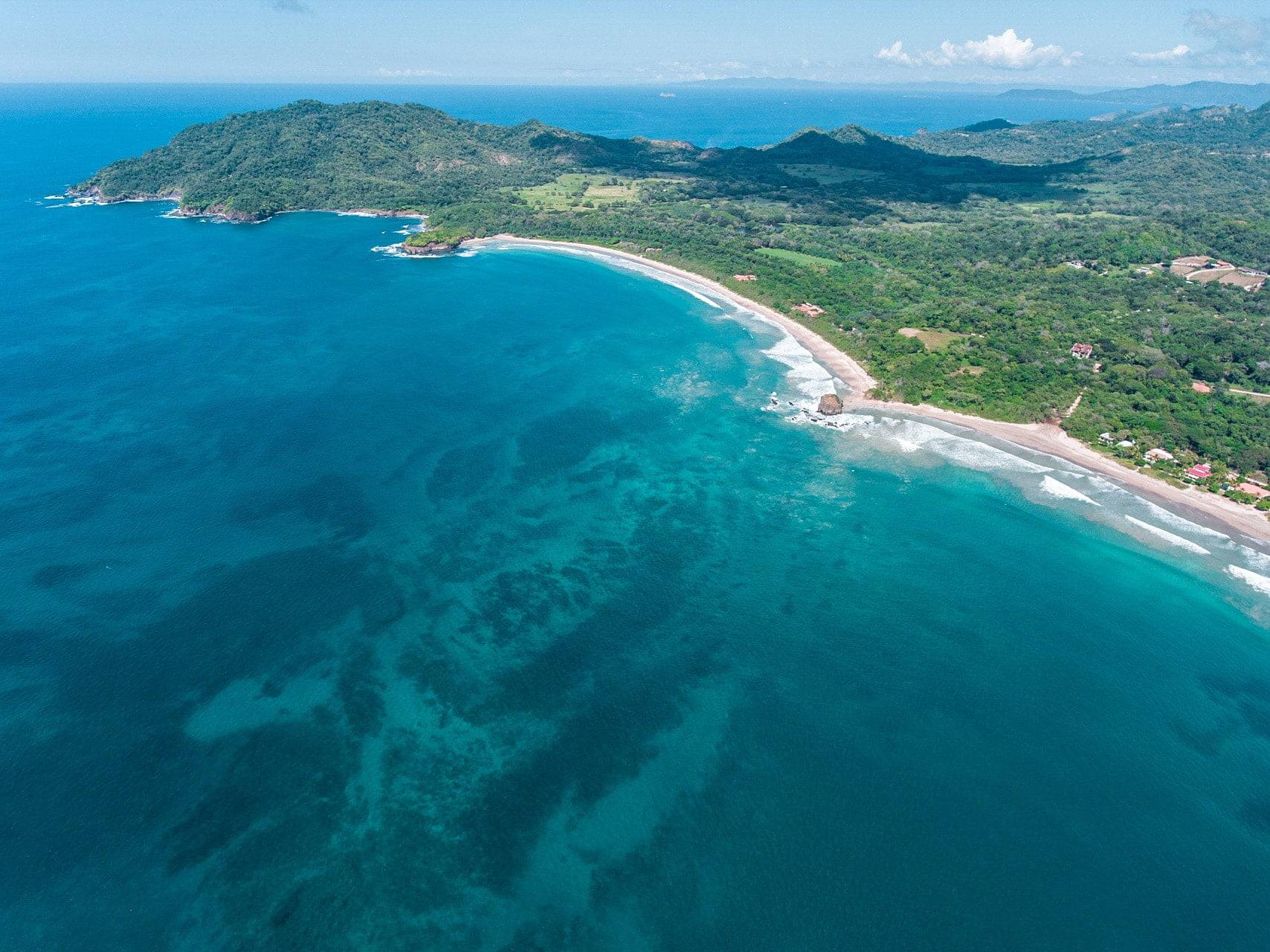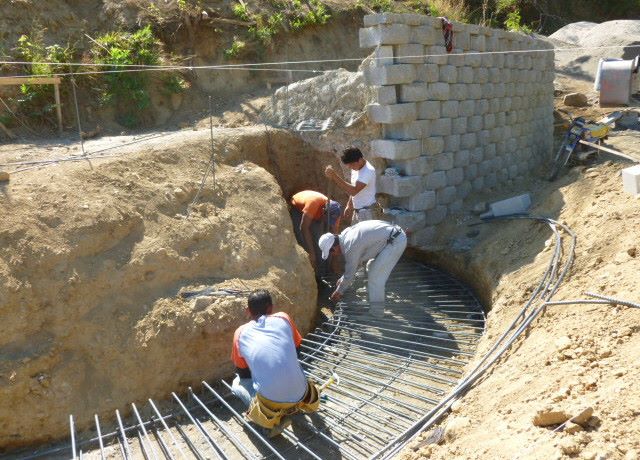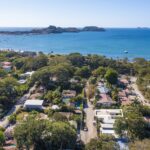There’s dreaming of your dream home, and then there’s building your dream home. The second one? It’s so much better! And that’s where real-world, real-life tips for home construction in Costa Rica come into play…
Because, if you’re planning on building a home in Costa Rica, then you know: It can be a challenge. After all, not only are you building a home, but you’re building it in a country that offers new environmental considerations, topographical challenges, and other details, many of which you’ll conduct in a second language.
Take heart! I’ve built over a dozen homes in Costa Rica and I can assure you, it’s not as overwhelming as it may first appear. When you have a great building site and an experienced team on your side, much of the process falls into place without much active effort on your part.
But, before this “effortless” dream achievement comes research, planning, and a few good tips on construction in Costa Rica…
Construction in Costa Rica Tip #1: Consider Your Building Site
Your building site is a huge part of your decision. To begin, your home site will have a huge influence on your build cost: Not only should you consider the cost of the lot itself, but also the required infrastructure.
For example, if you purchase a steep lot, you could be looking at six figures in retaining walls and other site remediation costs. That’s the kind of number big enough to determine how you build, the size of home you build, and so much more.
But, beyond that, your choice of building site is about so much more than cost. As you can see in the video above, my family and I chose a property that inspires us. It’s spectacular – overlooking miles of green and the blue Pacific – and just the kind of view you want to wake up to.
It also helped define our home’s design and construction. (Or rather, our desired design and construction narrowed down our homesite choices.) Because we’re perched on the hill, we can take advantage of sea breezes. This position, paired with tall and vaulted ceilings, means that we can take advantage of cross-breezes and smart architecture to minimize our reliance on air-conditioning.
Construction in Costa Rica Tip #2: Build Smart for Your Location

Can you point out your “dream” home site? (Pictured: Playa Grande, Costa Rica)
It’s no secret that the beach is hot. It’s also no secret that Costa Rica has dozens of microclimates. Where you live makes a big difference to your lifestyle.
If your desired lifestyle includes living at the beach, then you’ll want to build smart for beach living. As I mentioned in the above tip, for me, that includes building for beach weather.
In my case, this means high ceilings and plenty of cross ventilation. The high ceilings encourage heat to rise, keeping our floor-level living space cool. Add quality ceiling fans and good insulation (see Tip #3), and we use our air-conditioning sparingly. It will be great for the environment and for our energy bill!
Construction in Costa Rica Tip #3: Consider Steel Frame Construction
Concrete block construction was once the highly favored norm in Costa Rica. While concrete is still popular, steel frame construction is growing ever more popular.
There are a few reasons why I prefer steel frame construction here at the beach. Here are a few:
- It’s Fast: Steel frame construction in Costa Rica is a faster build than concrete block and other methods. And, when you’re staring down a time frame of 6-12+ months, a shortened timeframe is a welcome advantage.
- It’s Energy Efficient: When striving for energy efficiency, steel frame is the way to go. I like to build with waterproof DensGlass sheeting at ground level and drywall up higher, with batt insulation between interior and exterior walls (for a higher R rating). Even when you’re going easy on the a/c, sufficient insulation helps keep the heat out and the cool air in.
- It’s Flexible: Builders don’t like to talk about seismic effects, but the truth is that Costa Rica is earthquake country. And, while we don’t feel most of the earth’s movements, our homes do! Steel frame construction is more flexible than concrete block-and-rebar construction, which means that it’s less likely to show effects from tremors.
- It’s Easier to Renovate: Installing a new electrical outlet or fixing plumbing is no fun when you’re trying to tunnel through concrete block. Steel frame construction, on the other hand, makes for easy repairs through DensGlass (fiberglass gypsum) and drywall.
Construction in Costa Rica Tip #4: Insulate!
I’ve mentioned insulation a few times already, but it deserves its own tip.
Here’s why: Insulation is not a traditional feature of Costa Rican homes. And yet, especially here at the beach, insulation is synonymous with energy efficiency. This is how you lower your electric bills. It’s how you live cooler by day and sleep comfortably at night. And it’s how you help Mother Nature, who makes Costa Rica the beautiful place we’re lucky enough to call home.
But insulation is also quiet. And, depending on where you live, that can be a major advantage. Costa Rica is not a quiet place. When it’s not your neighbors dancing salsa or the town sending up fireworks to celebrate a holiday or Catholic saint, then it’s the howler monkeys howling or the parrots squawking.
If you crave quiet (at least, quiet when you choose it), then insulation and quality doors and windows can be a sanity-saving grace.
Construction in Costa Rica Tip #5: It’s Not as Different as You Think!

The biggest difference is how you’ll feel, once you can call here, “home!”
If you’ve read about building in Costa Rica, your head may be filled with warnings and provisos.
Most were once true… two decades ago. But in the last 15 years or so, Costa Rican construction has come a long way. And that way has been UP. Today, Costa Rican building methods, codes, and requirements are very similar to what you’d find in the U.S. and Canada.
Take our electrical, for example: If you hire quality electricians and an electrical engineer, you’ll quickly see that Costa Rican code is very similar to U.S. code. For every new build I’ve taken part in, we’ve had ground wires and all our wiring is color-coded. Professionals are here every step of the way, reviewing and signing off on completed work.
Construction in Costa Rica Tip #6: Install Solar Panels
Chances are, the weather is one of your top reasons for living in Costa Rica. After all, year-round summer is a tempting offer!
With the weather in mind, it should come as no shock that Costa Rican homes are great candidates for solar panels and solar electricity. So, before you build, mention this to your architect (so s/he will factor south-facing roof into your design) and your builder/site manager (so s/he can get started on any required permitting).
By the time your project is complete, you’ll thank yourself for getting ahead of the ball. For a very small percentage of your total project cost, you can reduce your electricity bill by 50% or more – for the 20+ year lifespan on good quality solar panels.
Home Construction in Costa Rica: What’s Your Dream?
If you’re down the rabbit hole of your Costa Rica dream home, condo, investment property, or vacation home, and are thinking, “hey, could I build it?”, then you are in the right place!
I’m Rebecca Clower, Owner and Broker of Blue Water Properties, and that’s what I did, too. More than a dozen times, no less! I have personal and professional experience, in everything from finding that “just right” building site (it may not be what you think) to hiring reliable professionals to estimating out the costs.
Our YouTube series on moving to & living in Costa Rica is a great place to start (more construction in Costa Rica videos there, too!). But please, get in touch.
At Blue Water Properties of Costa Rica, we’re more than a real estate team. We’re bilingual, bicultural, and seriously experienced. We’re sticklers for responding within 24 hours. And we put you first.
We’re also proud to offer some of the best Costa Rica real estate, including spectacular lots, dream homesites, and so much more.


